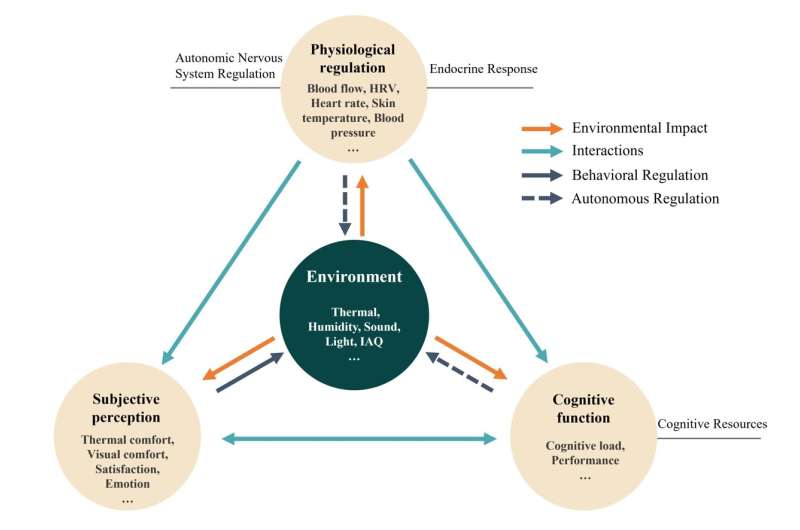This article has been reviewed according to Science X's editorial process and policies. Editors have highlighted the following attributes while ensuring the content's credibility:
fact-checked
proofread
Comfort isn't only a feeling, it's a study

The thermal environment refers to the physical surroundings as it pertains to the heat exchange of an individual and its environment. Naturally, the thermal environment also relates to comfort, or more specifically, thermal comfort. This type of comfort is an important metric to measure an individual's feelings as it relates to their environment and can be directly associated with health, efficiency, comfort, and energy consumption.
However, how these subjective values are measured is not necessarily the most effective or accurate. Here, researchers reassess how thermal comfort and thermal sensation play into an individual's health and well-being, both physiologically and on a cognitive level.
Researchers published their findings in Building Simulation on 19 January 2024.
The predominant metric of classifying thermal comfort is called "Thermal Sensation" in which a seven-level scale and the specific question in a questionnaire are utilized. The scale's seven levels are as follows: cold, cool, slightly cool, neutral, slightly warm, warm, and hot. The individual is also asked what their general thermal sensation is. The issue with this question, and the scale, is that it fails to ask or acknowledge the comfort, satisfaction, and acceptability of that thermal sensation.
"In laboratory studies, the focus is often on the impact of specific factors while neglecting the comprehensive effects of the overall environment on the human body and limiting some regulatory behaviors," said Zhiwei Lian, author and researcher of the study. Even the most recognized model when it comes to thermal comfort, the predicted mean vote (PMV) model, showed only 34% accuracy when compared to real environments as opposed to laboratory settings.
Therefore, researchers thought it appropriate to ask themselves some follow-up questions to further elucidate thermal sensation and thermal comfort to the individual's overall well-being. For example, questions that need to be answered include whether the thermally neutral state genuinely aligns with the highest probability of comfort, satisfaction, and acceptability, and if individuals experience these same emotions simply by being in the same state of thermal sensation.
To answer these questions, the thermal comfort evaluation system needs a bit of an overhaul. First, addressing the appropriate metrics based on the design goal for a given environment rather than solely on thermal neutrality or sensation might provide a more accurate method of evaluating the thermal environment. Second, a unified questionnaire based on psychological research can be an invaluable tool. This means a survey that can stand up against translation into a variety of languages without losing the subtle, but important, differences in meaning.
Finally, besides thermal sensation model, more accurate prediction models for other thermal perception would need to be developed, which should take into consideration the comprehensive interaction of various factors of the overall environment and an individual's needs.
We know that there are many nuances in the way humans interface with their environment and how the environment can affect an individual's ability to function, from both a physiological and cognitive standpoint. Once a better model is put into place, individuals might be able to see more personalized comfort in their environment.
"The ultimate goal may vary in different environments, such as seeking comfort in residential settings, pursuing efficiency in work or study environments, and aiming for sleep quality in sleep environments," said Lian. The fluidity in goals is key in advancing the study of thermal environment, comfort and sensation.
As the study points out, the thermal environment is closely intertwined with comfort, health, efficiency, and building energy consumption. With economic development, technological progress, we now have the capability to pursue a more comfortable, satisfactory, and healthy environment. However, blindly using thermal sensation or thermal neutrality to evaluate the environment or HVAC systems hinders the realization of this pursuit. The future of assessing thermal comfort and sensation should consider these factors for more accurate and impactful data.
More information: Zhiwei Lian, Revisiting thermal comfort and thermal sensation, Building Simulation (2024). DOI: 10.1007/s12273-024-1107-8



















